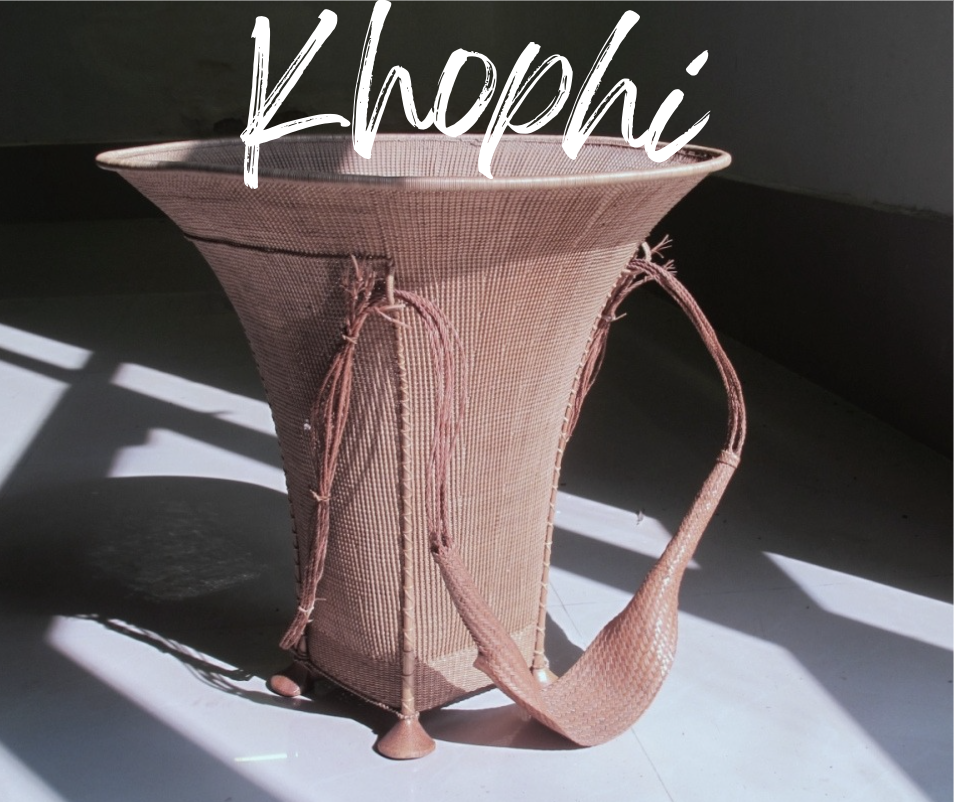Explore Eco-friendly And Efficient Packaging Trends
Feb 05, 2024 | Tanya Sachdeva
 In the rapidly evolving landscape of the home furnishings industry, packaging plays a crucial role not only in the protection and transportation of goods but also in shaping consumer perceptions and brand identity. As environmental concerns and sustainability goals take centre stage globally, there's a noticeable shift within the industry towards more sustainable and efficient packaging solutions.
In the rapidly evolving landscape of the home furnishings industry, packaging plays a crucial role not only in the protection and transportation of goods but also in shaping consumer perceptions and brand identity. As environmental concerns and sustainability goals take centre stage globally, there's a noticeable shift within the industry towards more sustainable and efficient packaging solutions. This transition is driven by the dual objectives of minimising environmental impact and meeting the increasing consumer demand for eco-friendly products and practices.
The importance of innovative packaging in the home furnishings sector cannot be overstated. It serves as a vital link between the product and its safe delivery to the consumer, ensuring that items arrive in pristine condition. Moreover, packaging is a powerful tool for brand storytelling, offering an opportunity to communicate a company's commitment to sustainability and innovation. In recent years, we've witnessed a significant transformation in packaging practices, with a growing number of brands adopting materials and designs that reduce waste, enhance recyclability, and leverage renewable resources.
The Rise of Eco-Friendly Packaging in Home Furnishings
The environmental footprint of traditional packaging methods in the home furnishings industry has long been a point of concern. These conventional practices often involve the use of single-use plastics, non-recyclable materials, and excessive packaging, contributing significantly to environmental degradation. The production and disposal of such packaging result in high carbon emissions, waste accumulation in landfills, and detrimental effects on marine life due to plastic pollution.
As awareness of these impacts grows, both consumers and manufacturers are increasingly prioritising sustainability, leading to a pivotal shift towards eco-friendly packaging solutions.
This shift is characterised by the adoption of materials and processes that aim to reduce the ecological impact of packaging. Biodegradable, recycled, and recyclable materials are becoming the norm, with innovative solutions emerging at the forefront of the industry's transformation. Among these, mushroom packaging and seaweed-based packaging stand out for their minimal environmental footprint and biodegradability. Mushroom packaging, made from mycelium and agricultural waste, offers a durable and compostable alternative that decomposes naturally without leaving harmful residues. Similarly, seaweed-based packaging provides a renewable, biodegradable solution that not only reduces waste but also utilises a resource that is abundant and sustainably harvested.
Popular examples of brands embracing these innovative materials underscore the industry's commitment to eco-friendly practices. For instance, IKEA has made strides in incorporating mushroom-based packaging for its flat-pack furniture, signalling a significant departure from polystyrene foam. Another notable example is the luxury home furnishings brand, Vitra, which has experimented with seaweed-based packaging for its smaller decor items, showcasing the potential of sustainable materials in reducing the carbon footprint associated with packaging.
Consumer demand plays a crucial role in driving this change towards sustainability. Today's environmentally conscious consumers are increasingly looking for products that align with their values, including minimal environmental impact and ethical production processes. This consumer preference is pushing brands to rethink their packaging strategies, not only to appeal to eco-conscious buyers but also to comply with stricter environmental regulations being implemented worldwide. The result is a growing trend of innovation and investment in packaging solutions that are not only environmentally friendly but also efficient and practical for the end-user.
The transition to eco-friendly packaging in the home furnishings industry reflects a broader recognition of the urgent need for sustainability. As more brands join this movement, the collective impact of these changes promises to make a significant difference in reducing the environmental footprint of the industry.
Through continued innovation and consumer support, eco-friendly packaging is set to become not just a trend but a standard practice, marking a positive step forward in the industry's journey towards sustainability.
Innovative Packaging Designs and Techniques
Beyond the choice of materials, design innovations play a crucial role in enhancing the sustainability and efficiency of packaging in the home furnishings industry. A prime example is the concept of flat-pack furniture, popularised by brands like IKEA. Flat-pack designs significantly reduce the volume of each package, allowing for more efficient transportation and storage. This, in turn, leads to lower carbon emissions associated with the delivery of products. Additionally, flat-pack furniture minimises the need for traditional packing materials, as the compact design itself offers protection to the product components during transit.
Technological advancements are also making their mark on packaging. The integration of QR codes is a noteworthy trend, offering a digital alternative to traditional paper-based assembly instructions and product information. This not only reduces paper usage but also enhances the customer experience by providing easy access to interactive and comprehensive guidance. Brands leading in innovative packaging designs, such as IKEA, are demonstrating that it is possible to combine aesthetic appeal with environmental responsibility. IKEA's commitment to reducing its environmental footprint is evident in its extensive use of flat-pack solutions and its ongoing efforts to incorporate recycled materials and renewable resources across its product range.
These examples underscore the home furnishings industry's commitment to sustainability and efficiency through both material innovation and design ingenuity. By rethinking packaging from the ground up, brands are not only responding to consumer demand but also contributing to a more sustainable future.
2024 Insights: Latest Trends and Developments
As we venture deeper into 2024, the home furnishings industry is witnessing a slew of innovative trends and developments, particularly in packaging solutions. These trends are largely fueled by the ongoing pursuit of sustainability and the integration of advanced technologies, reflecting a dynamic landscape that's adapting to both environmental concerns and consumer expectations.
One of the most notable trends is the increasing use of artificial intelligence (AI) in optimising packaging design and logistics. AI algorithms can analyse vast amounts of data to predict the most efficient packaging shapes and sizes, reducing material waste and improving transportation efficiency. This technology enables brands to customise packaging solutions that are both eco-friendly and cost-effective, ensuring minimal environmental impact.
Another significant development is the emergence of bio-based packaging adhesives. Moving away from traditional petroleum-based adhesives, the industry is embracing alternatives made from natural resources such as plant starches and oils. These bio-adhesives are not only renewable but also biodegradable, offering a strong bond without the environmental footprint associated with conventional options.
Regulatory changes and industry standards are also playing a pivotal role in promoting eco-friendly packaging. Governments and industry bodies worldwide are implementing stricter regulations and guidelines to encourage the use of sustainable materials and processes. These measures are pushing companies to innovate and adopt greener practices, contributing to a more sustainable industry ecosystem.
The Future of Packaging in Home Furnishings
As we look towards the future, the packaging in the home furnishings industry is poised for even more transformative changes. The continuous push for innovation, driven by environmental concerns and technological advancements, suggests a move towards fully sustainable and circular economy models. These models prioritise the reuse and recycling of materials, effectively minimising waste and reducing the environmental footprint of packaging processes.
The potential for circular economy practices in packaging is significant. It entails not just recycling, but also designing packaging with its end-of-life in mind, ensuring that materials can either be easily repurposed or biodegraded. This approach requires a collaborative effort across the supply chain, from manufacturers selecting sustainable materials to consumers participating in recycling programs.
Consumer awareness and regulatory pressures are also key drivers for change, signalling a shift in how packaging is perceived and valued. As consumers become more informed about the environmental impact of their purchases, their demand for sustainable packaging solutions increases. Concurrently, governments and regulatory bodies are tightening regulations around waste and sustainability, setting higher standards for the industry to achieve. These pressures serve as a catalyst for innovation, pushing brands to explore new materials, designs, and technologies that align with the principles of sustainability and efficiency.
The future of packaging in the home furnishings industry is thus characterised by a greater emphasis on sustainability, consumer engagement, and regulatory compliance. It is a future where packaging not only serves its fundamental purpose of protecting and transporting goods but also contributes positively to the global effort to combat environmental degradation. Through continuous innovation and adherence to circular economy principles, the industry can look forward to a more sustainable, efficient, and responsible packaging paradigm.
Conclusion
Throughout this blog, we've explored the significant strides made in the home furnishings industry towards more eco-friendly and efficient packaging solutions. From the shift away from traditional materials to the embrace of innovative designs and technologies, the industry is witnessing a profound transformation. The examples of mushroom packaging, seaweed-based materials, flat-pack furniture, and the integration of digital technologies like QR codes illustrate the industry's commitment to sustainability and efficiency.
The importance of such eco-friendly and efficient packaging solutions cannot be overstated. They not only mitigate environmental impact but also respond to the growing consumer demand for sustainable products. As we've seen, the future holds great promise for further innovations, with the potential for circular economy models and continued advancements driven by consumer awareness and regulatory pressures.
To ensure a sustainable future for our planet, it is imperative for both consumers and companies within the home furnishings industry to continue pushing for and adopting sustainable practices. The journey towards eco-friendly packaging is a collective endeavor, one that requires ongoing commitment and creativity to navigate the challenges and opportunities that lie ahead. Together, we can redefine the standards of packaging in the industry, ensuring that we not only meet the needs of the present but also secure a healthier, more sustainable world for future generations.
Recommended



Wholesale / B2b Kathputli Puppets From Ahemdabad
Dec 16, 2024





